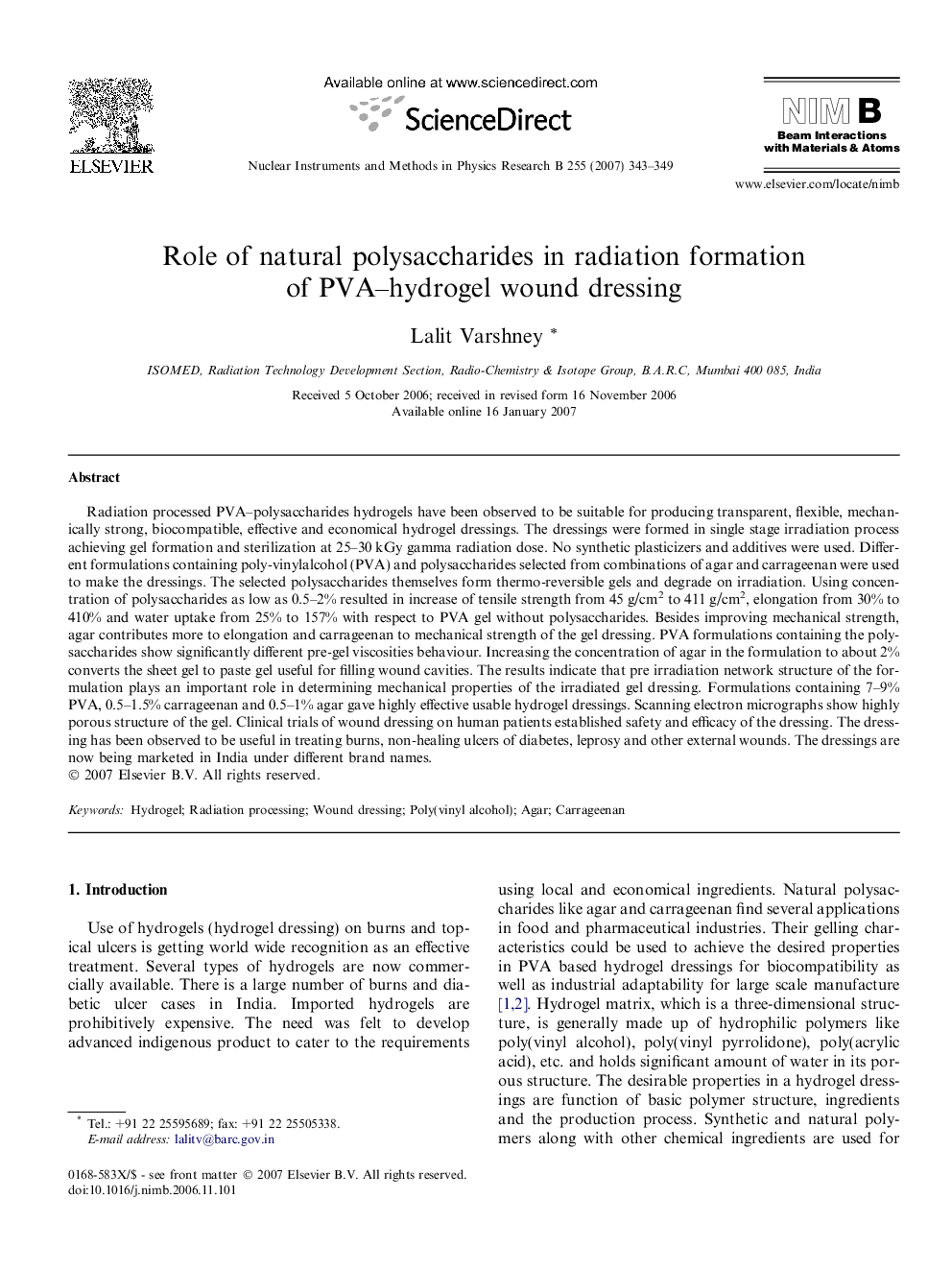| Article ID | Journal | Published Year | Pages | File Type |
|---|---|---|---|---|
| 1686740 | Nuclear Instruments and Methods in Physics Research Section B: Beam Interactions with Materials and Atoms | 2007 | 7 Pages |
Radiation processed PVA–polysaccharides hydrogels have been observed to be suitable for producing transparent, flexible, mechanically strong, biocompatible, effective and economical hydrogel dressings. The dressings were formed in single stage irradiation process achieving gel formation and sterilization at 25–30 kGy gamma radiation dose. No synthetic plasticizers and additives were used. Different formulations containing poly-vinylalcohol (PVA) and polysaccharides selected from combinations of agar and carrageenan were used to make the dressings. The selected polysaccharides themselves form thermo-reversible gels and degrade on irradiation. Using concentration of polysaccharides as low as 0.5–2% resulted in increase of tensile strength from 45 g/cm2 to 411 g/cm2, elongation from 30% to 410% and water uptake from 25% to 157% with respect to PVA gel without polysaccharides. Besides improving mechanical strength, agar contributes more to elongation and carrageenan to mechanical strength of the gel dressing. PVA formulations containing the polysaccharides show significantly different pre-gel viscosities behaviour. Increasing the concentration of agar in the formulation to about 2% converts the sheet gel to paste gel useful for filling wound cavities. The results indicate that pre irradiation network structure of the formulation plays an important role in determining mechanical properties of the irradiated gel dressing. Formulations containing 7–9% PVA, 0.5–1.5% carrageenan and 0.5–1% agar gave highly effective usable hydrogel dressings. Scanning electron micrographs show highly porous structure of the gel. Clinical trials of wound dressing on human patients established safety and efficacy of the dressing. The dressing has been observed to be useful in treating burns, non-healing ulcers of diabetes, leprosy and other external wounds. The dressings are now being marketed in India under different brand names.
